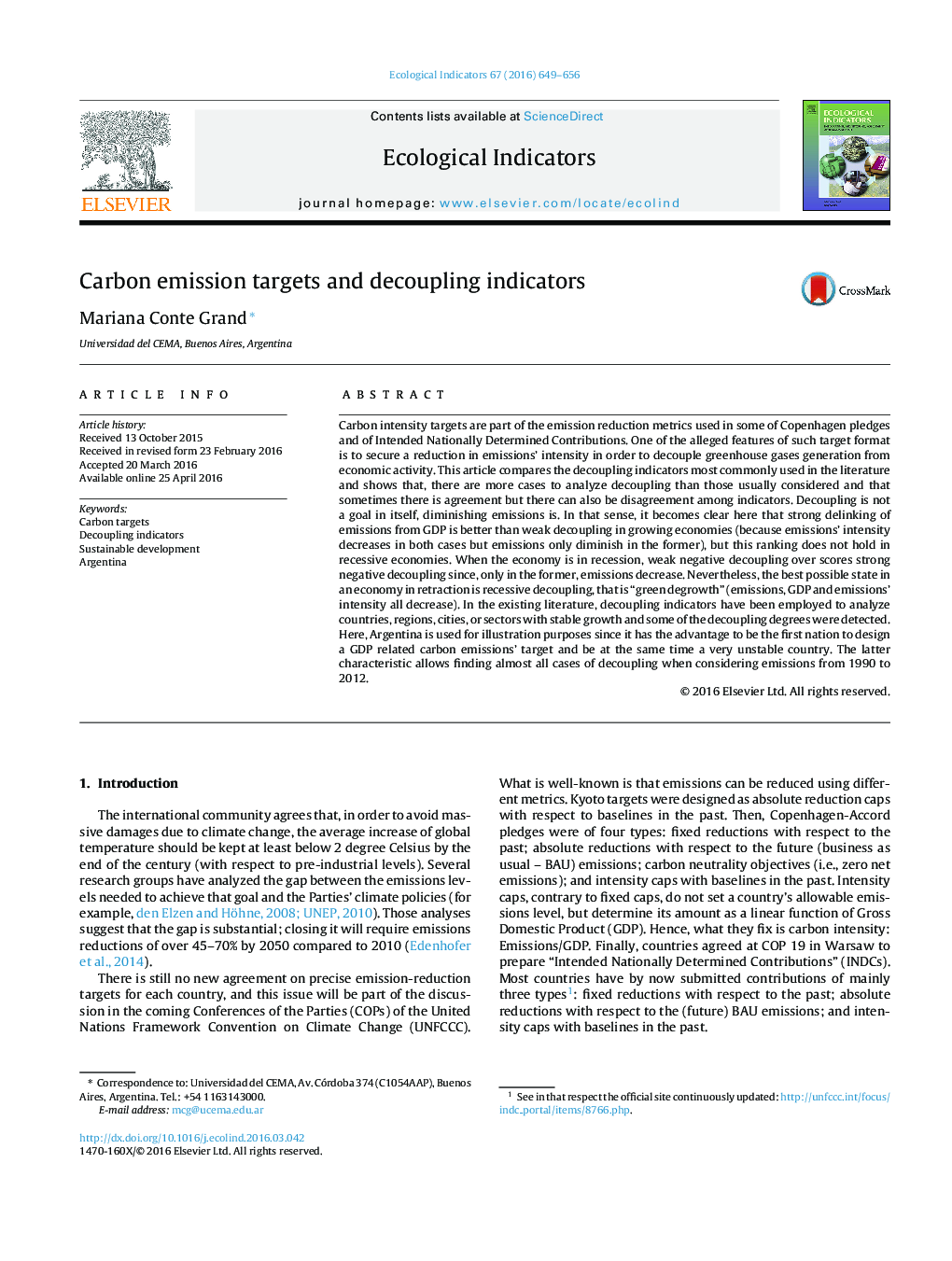| کد مقاله | کد نشریه | سال انتشار | مقاله انگلیسی | نسخه تمام متن |
|---|---|---|---|---|
| 4372910 | 1617135 | 2016 | 8 صفحه PDF | دانلود رایگان |
Carbon intensity targets are part of the emission reduction metrics used in some of Copenhagen pledges and of Intended Nationally Determined Contributions. One of the alleged features of such target format is to secure a reduction in emissions’ intensity in order to decouple greenhouse gases generation from economic activity. This article compares the decoupling indicators most commonly used in the literature and shows that, there are more cases to analyze decoupling than those usually considered and that sometimes there is agreement but there can also be disagreement among indicators. Decoupling is not a goal in itself, diminishing emissions is. In that sense, it becomes clear here that strong delinking of emissions from GDP is better than weak decoupling in growing economies (because emissions’ intensity decreases in both cases but emissions only diminish in the former), but this ranking does not hold in recessive economies. When the economy is in recession, weak negative decoupling over scores strong negative decoupling since, only in the former, emissions decrease. Nevertheless, the best possible state in an economy in retraction is recessive decoupling, that is “green degrowth” (emissions, GDP and emissions’ intensity all decrease). In the existing literature, decoupling indicators have been employed to analyze countries, regions, cities, or sectors with stable growth and some of the decoupling degrees were detected. Here, Argentina is used for illustration purposes since it has the advantage to be the first nation to design a GDP related carbon emissions’ target and be at the same time a very unstable country. The latter characteristic allows finding almost all cases of decoupling when considering emissions from 1990 to 2012.
Journal: Ecological Indicators - Volume 67, August 2016, Pages 649–656
